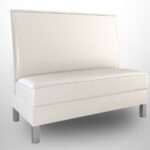As New York City continues to recover from the impacts of the pandemic, businesses, employees, and the commercial real estate sector are grappling with the complexities of returning to the office. The return-to-office (RTO) trends in NYC have evolved significantly since the start of the pandemic, with shifts in workplace policies, office design, employee preferences, and the future of commercial real estate. This article delves into the various challenges, trends, and shifts influencing NYC workspaces as companies navigate the post-pandemic landscape.
Read also: The Evolution of New York Offices: A Look Back Over the Decades
Return-to-Office Policies
Mandatory In-Office Attendance
After years of remote work, many organizations in NYC are implementing strict return-to-office policies. Major companies such as JPMorgan, Amazon, and Goldman Sachs have enforced full-time in-office mandates for their employees. This move is largely driven by the desire to reinstate a sense of collaboration, mentorship, and spontaneous interaction that was previously lost in remote settings. These companies believe that in-office attendance is essential for maintaining productivity, company culture, and client relationships.
For example, JPMorgan has required its employees to return to the office full-time, emphasizing the importance of in-person interactions. Similarly, Amazon has pushed for more in-office work to boost innovation and collaboration within teams. However, while these mandates may be well-received by leadership and clients, many employees are pushing back, citing concerns over work-life balance, commuting costs, and flexibility.
Hybrid Work Models
In contrast to companies enforcing full-time in-office attendance, many businesses are adopting hybrid work models. This approach allows employees to work both remotely and in the office, typically with a set number of days required in the office. Hybrid work has become the new norm for many companies, providing flexibility to employees while still ensuring that they have the opportunity to collaborate face-to-face when necessary.
Hybrid work models have been designed to accommodate a variety of employee needs, ranging from flexible schedules to the option to work from home on certain days. By offering employees a mix of in-office and remote work, companies aim to improve morale, attract top talent, and maintain productivity while offering more work-life balance.
Employee Compliance and Feedback
As businesses implement return-to-office policies, tracking employee compliance has become an important aspect of these initiatives. Many companies are using software and digital tools to monitor attendance and ensure that employees are adhering to the set expectations. Additionally, employee feedback is being closely monitored to refine and adjust policies based on employee preferences and satisfaction. Understanding employee sentiment is critical in maintaining high morale and ensuring that RTO policies do not negatively impact the workforce.
Office Attendance and Utilization
Current Attendance Rates
Despite the rise of hybrid and remote work, office attendance in NYC is slowly recovering. As of May 2024, 56% of Manhattan office workers are present on average weekdays, which represents approximately 72% of pre-pandemic office attendance levels. This recovery rate is significant, yet still below the levels seen before the pandemic, reflecting the ongoing challenges of getting employees back into offices full-time.
Some companies report higher attendance on certain days of the week, with Tuesdays being the busiest office day post-pandemic. This trend aligns with the hybrid work model, where employees choose to come into the office on specific days to collaborate with teams, while working remotely the rest of the week.
Peak Attendance Days
According to recent studies, office attendance patterns have changed since the pandemic. Tuesdays are now recognized as the peak attendance day for many offices in NYC. These patterns highlight a growing preference for a flexible workweek, where employees choose specific days to work from the office based on collaboration needs or team schedules. This shift in office attendance is reshaping how companies think about space utilization and scheduling, as they work to align office presence with business needs.
Workspace Preferences
As office attendance fluctuates, there is a growing demand for diverse workspace options. Employees are seeking more flexible and customizable office environments that support different work styles. This includes creating collaborative areas for team meetings, quiet spaces for focused work, and spaces for informal interactions. In this environment, the one-size-fits-all office design is becoming less effective, as companies are increasingly prioritizing flexible layouts that can adapt to changing work styles and preferences.
Office Design and Amenities
Flexible and Adaptable Spaces
One of the most significant changes in office design is the shift toward flexible and adaptable spaces. With more employees splitting their time between the office and home, businesses are designing their workspaces to be more versatile. This includes creating collaborative areas for team meetings, quiet zones for focused work, and multipurpose spaces that can be easily reconfigured based on current needs.
Companies are also investing in hot-desking systems, where employees do not have assigned desks but instead book spaces as needed. This approach optimizes office space, especially in the context of reduced office attendance, and allows businesses to accommodate fluctuating attendance patterns.
Health and Wellness Features
Incorporating health and wellness features into office design has become a top priority for businesses looking to attract and retain employees. The pandemic has heightened awareness around the importance of creating safe, healthy work environments. Features like improved air quality, access to natural light, and dedicated wellness rooms are becoming essential in modern office design.
Additionally, some companies are incorporating fitness centers, meditation rooms, and outdoor spaces into their office designs. These amenities not only contribute to employee well-being but also foster a culture of health and productivity.
Technology Integration
As businesses continue to embrace hybrid work models, the integration of technology into office spaces is crucial. Advanced technologies such as video conferencing tools, smart lighting systems, and digital room booking software are becoming standard features in modern offices. These technologies help facilitate smooth collaboration between in-office and remote workers, ensuring that hybrid teams can function effectively regardless of where they are located.
Commercial Real Estate Market
Leasing Activity
The commercial real estate market in NYC has seen an uptick in leasing activity, particularly in the first three quarters of 2024. A significant portion of the leasing activity is driven by sectors like financial services, which have been more willing to return to in-office work. However, companies are increasingly seeking flexible office spaces that can accommodate hybrid work models and provide more adaptable options than traditional office setups.
Leasing activity has also been influenced by the increasing demand for high-quality office spaces, with businesses prioritizing properties that offer modern amenities, flexible layouts, and advanced technology. The ongoing trend toward flexible office environments is reshaping how businesses evaluate office space options in NYC.
Investor Interest
The commercial real estate market in NYC is seeing renewed investor interest, particularly in high-quality office spaces. Many investors are optimistic about the long-term potential of the market, especially as businesses continue to adapt to hybrid work models and seek flexible, modern office environments. However, older office buildings that lack modern amenities are facing greater challenges in attracting tenants.
Challenges for Older Buildings
While demand for new, modern office spaces is strong, older office buildings are struggling to attract tenants. These buildings often lack the flexibility, technology, and amenities that businesses are looking for in today’s office environment. As a result, many older office buildings are undergoing renovations or being repurposed to meet the changing needs of the modern workforce.
Employee Experience and Satisfaction
Work-Life Balance
A major concern for employees as they return to the office is achieving a healthy work-life balance. Many employees appreciate the flexibility of remote work and are hesitant to return to a full-time office schedule. Companies that prioritize work-life balance, such as through hybrid work models or flexible office hours, are more likely to attract and retain top talent.
Company Culture and Collaboration
While remote work has allowed for greater flexibility, in-office work remains essential for fostering company culture and collaboration. Many businesses recognize the value of in-person interactions for building relationships, enhancing creativity, and strengthening team dynamics. As such, they are finding ways to balance the benefits of remote work with the need for in-office collaboration.
Feedback and Policy Adjustments
Collecting and responding to employee feedback is a crucial part of refining return-to-office policies. By gathering insights into employee preferences and concerns, businesses can make necessary adjustments to their policies and office environments to better meet the needs of their workforce.
Read also: New York’s Rise as a Business Hub
Future Outlook
Evolving Work Patterns
As hybrid work models continue to gain popularity, the future of work in NYC is likely to be characterized by more flexible work patterns. Employees will continue to split their time between home and the office, and businesses will adapt by offering more flexible office environments.
Long-Term Real Estate Trends
The commercial real estate market in NYC will continue to evolve in response to changing workplace dynamics. There will likely be sustained demand for flexible office spaces, and businesses will prioritize modern, adaptable office environments that can support hybrid work.
Technological Advancements
Emerging technologies will play a significant role in shaping the future of workspaces. From smart office systems to advanced collaboration tools, technology will continue to enhance the hybrid work experience and transform the way businesses and employees interact.
















